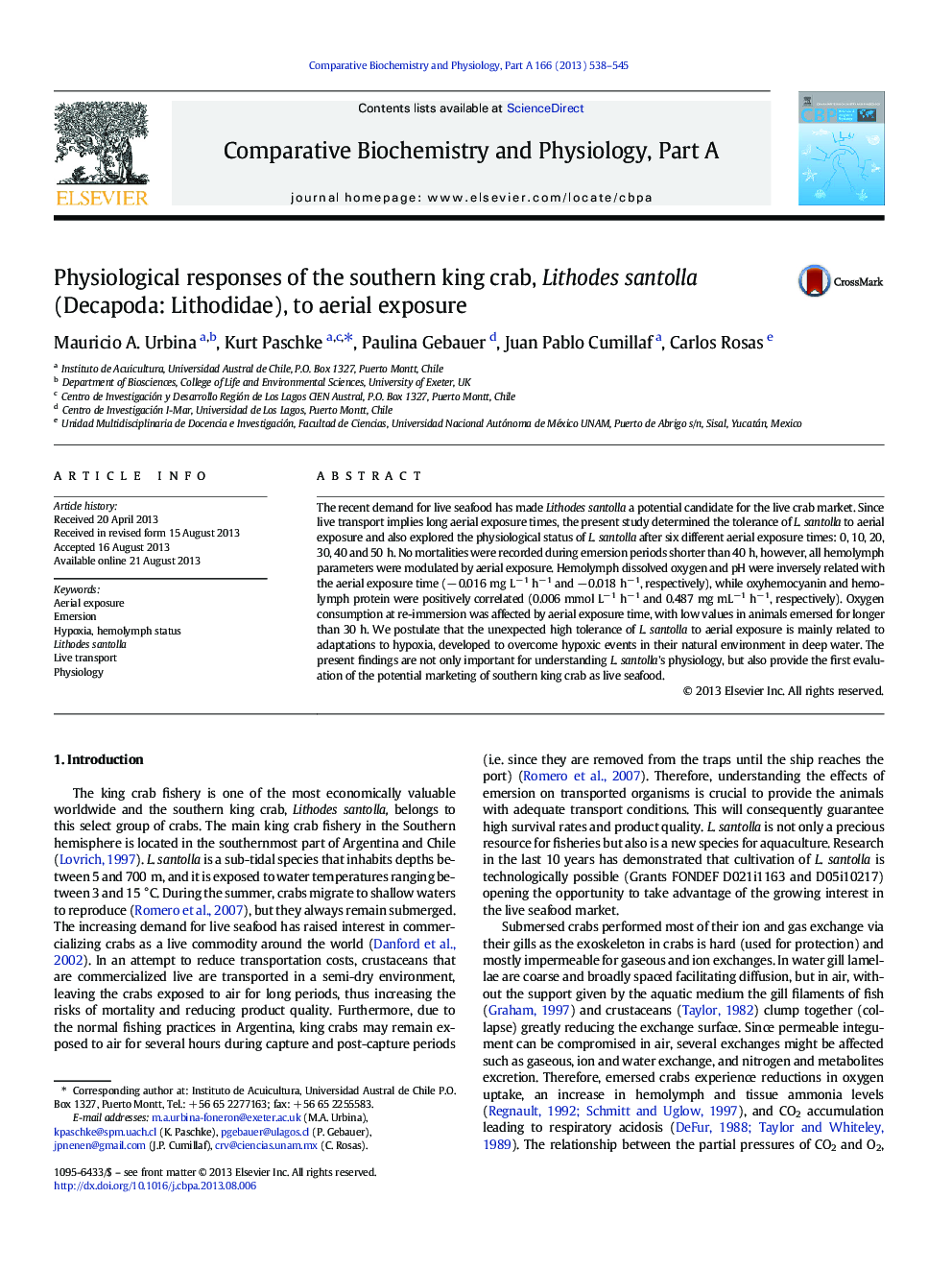| Article ID | Journal | Published Year | Pages | File Type |
|---|---|---|---|---|
| 1972309 | Comparative Biochemistry and Physiology Part A: Molecular & Integrative Physiology | 2013 | 8 Pages |
The recent demand for live seafood has made Lithodes santolla a potential candidate for the live crab market. Since live transport implies long aerial exposure times, the present study determined the tolerance of L. santolla to aerial exposure and also explored the physiological status of L. santolla after six different aerial exposure times: 0, 10, 20, 30, 40 and 50 h. No mortalities were recorded during emersion periods shorter than 40 h, however, all hemolymph parameters were modulated by aerial exposure. Hemolymph dissolved oxygen and pH were inversely related with the aerial exposure time (− 0.016 mg L− 1 h− 1 and − 0.018 h− 1, respectively), while oxyhemocyanin and hemolymph protein were positively correlated (0.006 mmol L− 1 h− 1 and 0.487 mg mL− 1 h− 1, respectively). Oxygen consumption at re-immersion was affected by aerial exposure time, with low values in animals emersed for longer than 30 h. We postulate that the unexpected high tolerance of L. santolla to aerial exposure is mainly related to adaptations to hypoxia, developed to overcome hypoxic events in their natural environment in deep water. The present findings are not only important for understanding L. santolla's physiology, but also provide the first evaluation of the potential marketing of southern king crab as live seafood.
